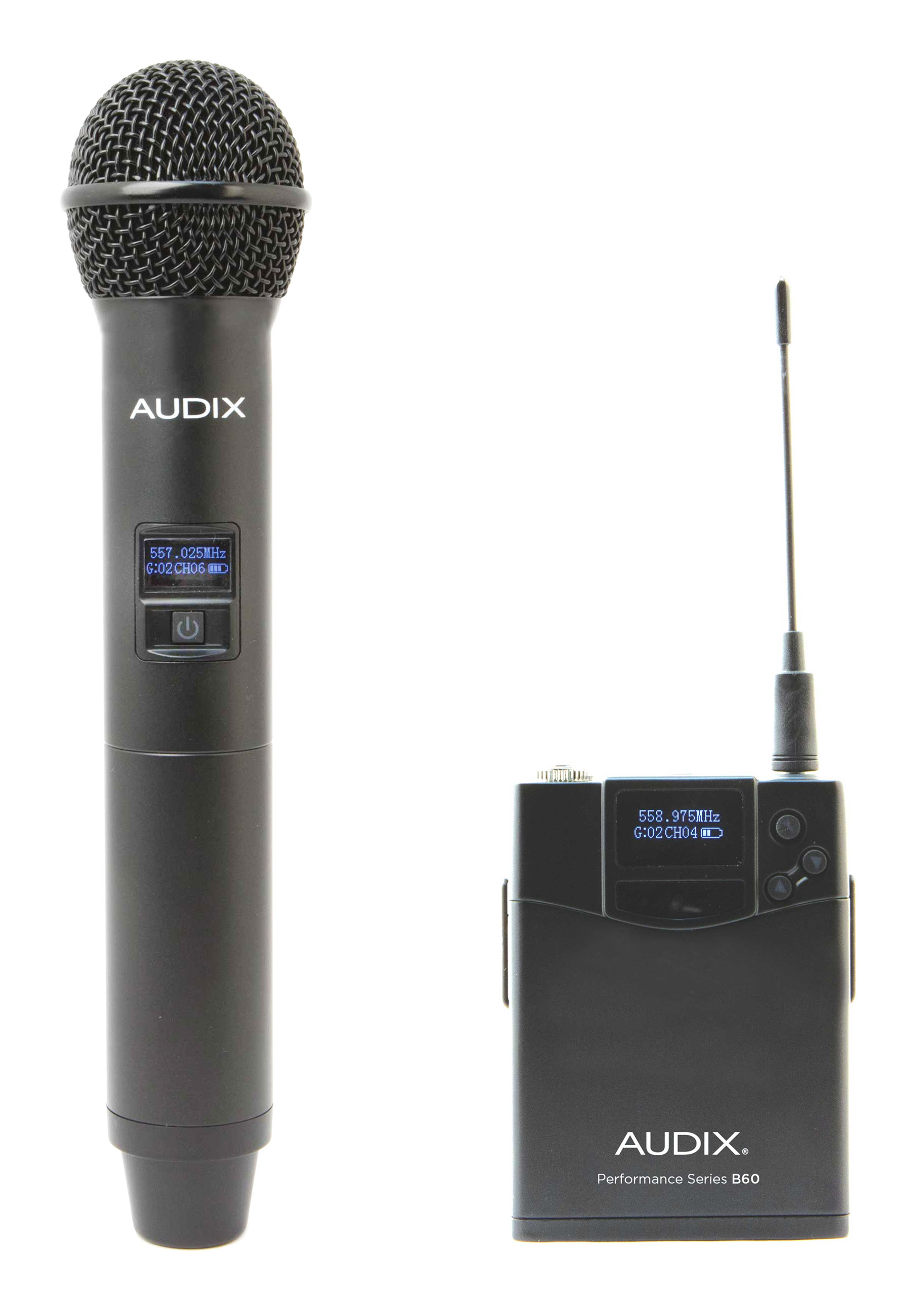
Firing It Up
On my test bench, I found setting up the system to be a simple matter. After plugging in the receiver, I didn’t even have to scroll through the menu to find the auto scan feature because the “up” and “down” button can act as “hot keys” for this feature when I pressed and held them. Pressing the “down” button, the unit entered the “scan for a clear frequency” mode and found a clear frequency within 15 seconds.
Pairing the transmitter was as simple as opening up the battery compartment handle section, dropping in a couple of AA batteries, turning the unit on, hitting the sync button on the receiver, pointing the transmitter’s sync window at the receiver’s sync window (at a distance of about 6 inches), and waiting a few seconds. The screens on both transmitter and receiver indicate when the sync is complete.
The transmitter is now programmed to the clear frequency found by the receiver, with its display showing the new frequency. After the sync, the receiver also shows the transmitter’s battery life, confirming that the sync was successful. Simply, this is the easiest frequency scanning and syncing of a wireless system I’ve ever encountered.
Plugged into my bench PA, I turned up the system’s channel and gave it a listen. Sonically, it matched the wired OM5 mics in my company’s inventory. After getting familiar with the menu and changing frequencies a few more times, I was satisfied that everything was in working order and so I packed the system in the carrying case to get it ready for work in the field.
Differing Roles
The first gig was a corporate meeting where the system was dedicated to a male presenter. We were considering a wireless system with a bodypack and headset mic for this application, but the presenter stated a preference for a handheld.
So I handed him the H60 transmitter, we did a quick sound check, and it was show time. He had a strong baritone voice and didn’t require much in terms of EQ to sound natural. While I usually prefer a wider cardioid pattern for spoken-word presenters, the hypercardioid OM5 worked quite well in this application, combined with good mic technique. Sonic quality was excellent, and the system performed flawlessly, with no dropouts or glitches.

Next up was a government meeting we handle almost every month, and this time, the Performance Series system was applied for the Q&A requirement. It also served as an extra transmitter to pass around when people who were not presenting were asked a question. (Because we’re required to record these meetings, all questions and answers need to be captured.)
The system proved as easy to set up as it was in the shop. I scanned the airwaves with an RF Explorer handheld spectrum analyzer, set up the other wireless systems for the event (leaving their transmitters turned on), and then set the Performance Series to auto scan. It found a clear channel in seconds, I did a quick sync, and we were in business. Again we enjoyed high sonic quality and flawless RF performance.
Moving It Around
The final application came for a Friday night performance by a rock/pop band at a large local nightclub. Normally the group’s male and female singers use mid-level wired mics, so the OM5 was a big step up.
We placed it first with the male vocalist, who also played guitar, and he sounded right on. He even commented during the show about how good it was sounding. In the next set, we switched the system to the female vocalist, and I immediately noticed that the male singer now sounded “thinner” with his mid-level wired mic while the female singer sounded far better than in the first set.
As a result, in the third set we switched the male vocal to a wired OM5 that we’d brought along, keeping the Performance Series on the female vocal. She didn’t play an instrument and thus could benefit from the greater mobility afforded by going wireless.
Following this evaluation, I can confidently recommend the Audix Performance Series with very high praise. The transmitter feels as good in the hand as units costing way more, the sound quality is top notch, and the ease of use in finding and setting frequencies is second to none. It’s definitely worthy of consideration by sound companies and musicians seeking rock-solid, reliable RF functionality with quality sonic performance. Find out more at audixusa.com.
U.S. MSRP: R61 receiver – $500; H60 transmitter (w/OM5) – $350, B60 transmitter – $250
